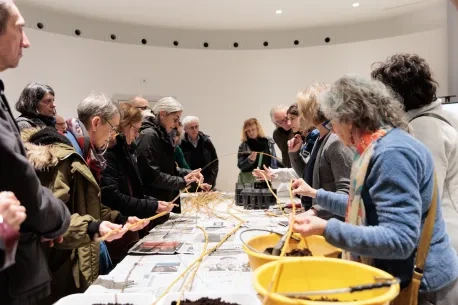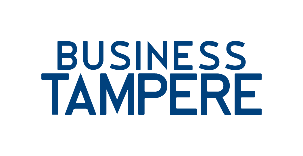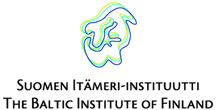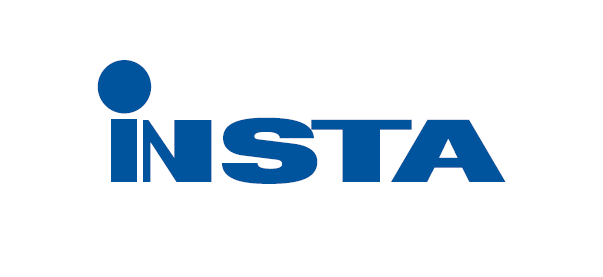Smart Urban Security and Event Resilience (SURE) Journal 1: How Tampere is intervening in the area of urban security and daily city resilience through the lens of event management

Executive Summary
SURE stands for Smart Urban Security and Events Resilience. Through focusing on events taking place in Tampere Central Square, the (newly constructed) private Uris Live Arena and Tampere Ratina Stadium the project aims to:
- increase cross-sectoral preparedness to threats against public spaces and other urban security risks,
- advance Artificial Intelligence (AI) technology around pubic surveillance and
- improve risk management and reduce vulnerabilities in daily life.
Why events?
Events, whether small or large, constitute a key component of city-life and when large enough they can truly disrupt everyday life and certainly pose key security challenges ranging from standard crowd-management, traffic flow, accidents, terrorist attacks or other crises such as health risks (covid-19 pandemic) and environmental hazards.
Events are related to city branding and tourist attraction and as such a smooth event management can be a key factor for the image and the development of a city.
Events can often be a central proposition for economic development. Event organisation is linked to a number of professions and economic and social activities and are thus an accelerator of urban economy.
The project advances the goals of the European Urban Agenda for improved public space safety and digitisation. In the context of the handling of the COVID-19, public space and livability became a critical necessity whereas public space has been re-discovered as a valued commodity for free and safe dwelling.
The project at a glance:
Aiming at improving the security and accessibility of events from the point of view of visitors and organisers, a completely new AI system is developed in order to facilitate information sharing, mobility during large events, risk management and risk minimisation. In addition to the new AI system, a blueprint for improved coordination between relevant stakeholders is serving as a change management manual for improved events delivery and risk management.
Project Partners:
SURE stands for Smart Urban Security and Events Resilience. Through focusing on events taking place in Tampere Central Square, the (newly constructed) private Uris Live Arena and Tampere Ratina Stadium the project aims to:
- increase cross-sectoral preparedness to threats against public spaces and other urban security risks,
- advance Artificial Intelligence (AI) technology around pubic surveillance and
- improve risk management and reduce vulnerabilities in daily life.
Why events?
Events, whether small or large, constitute a key component of city-life and when large enough they can truly disrupt everyday life and certainly pose key security challenges ranging from standard crowd-management, traffic flow, accidents, terrorist attacks or other crises such as health risks (covid-19 pandemic) and environmental hazards.
Events are related to city branding and tourist attraction and as such a smooth event management can be a key factor for the image and the development of a city.
Events can often be a central proposition for economic development. Event organisation is linked to a number of professions and economic and social activities and are thus an accelerator of urban economy.
The project advances the goals of the European Urban Agenda for improved public space safety and digitisation. In the context of the handling of the COVID-19, public space and livability became a critical necessity whereas public space has been re-discovered as a valued commodity for free and safe dwelling.
The project at a glance:
Aiming at improving the security and accessibility of events from the point of view of visitors and organisers, a completely new AI system is developed in order to facilitate information sharing, mobility during large events, risk management and risk minimisation. In addition to the new AI system, a blueprint for improved coordination between relevant stakeholders is serving as a change management manual for improved events delivery and risk management.
What are we dealing with?
Tampere is the second largest city in Finland located in an isthmus between two large lakes. With a 250-year history, Tampere is a post-industrial city which has already withstood the first challenge of transformation from an industrial capital to a modern services and technology urban centre, hosting international technology companies and holding key infrastructure assets as a major rail junction and lake port. Capitalising on its unique natural features, the city today is growing with a combination of technology and tourist services and an investment in its city-branding identity as a modern get-away destination.
Digitisation demands a sharp adjustment from the public sector introducing rapid changes both to the online information management systems, but also to more traditional areas such as first response services (police, firefighters and first aid). A combination of online and offline approaches is necessary to ensure that the public sector at the local level will adjust to these challenges and transformation demands. Smart Tampere is the strategic development programme of the City of Tampere for 2017–2021, integrating carbon neutrality and digital user flexibility for services as a key goal. Security and urban resilience are approached through these lenses within SURE.
Access to safe public spaces is an urgent matter of equitable urban development. However, urban safety results as a combination of actions which address long-term stresses to reduce the effect of short-term shocks. Given the fact that in the 21st century risks are increasing in intensity and volatility, it is imperative to introduce data-driven and forward-looking solutions to key urban challenges in order to mitigate the effects of crisis.
Large events have traditionally been hot spots for potential accidents and increased risks whether these are natural or man-made threats. Large crowd concentration increases vulnerabilities and the potential of higher damage. At the same time event visitors expect to participate in an event without feeling insecure and to enjoy a seamless experience.
Events constantly transform and in 2020 we already saw the development of a combination of online-offline activities due to the outbreak of COVID-19 the effects of which are expected to last beyond the end of the pandemic itself. The combination of these challenges are ever present for public authorities, event organisers and event visitors and require a modern approach that will combine optimal service delivery to risk mitigation.
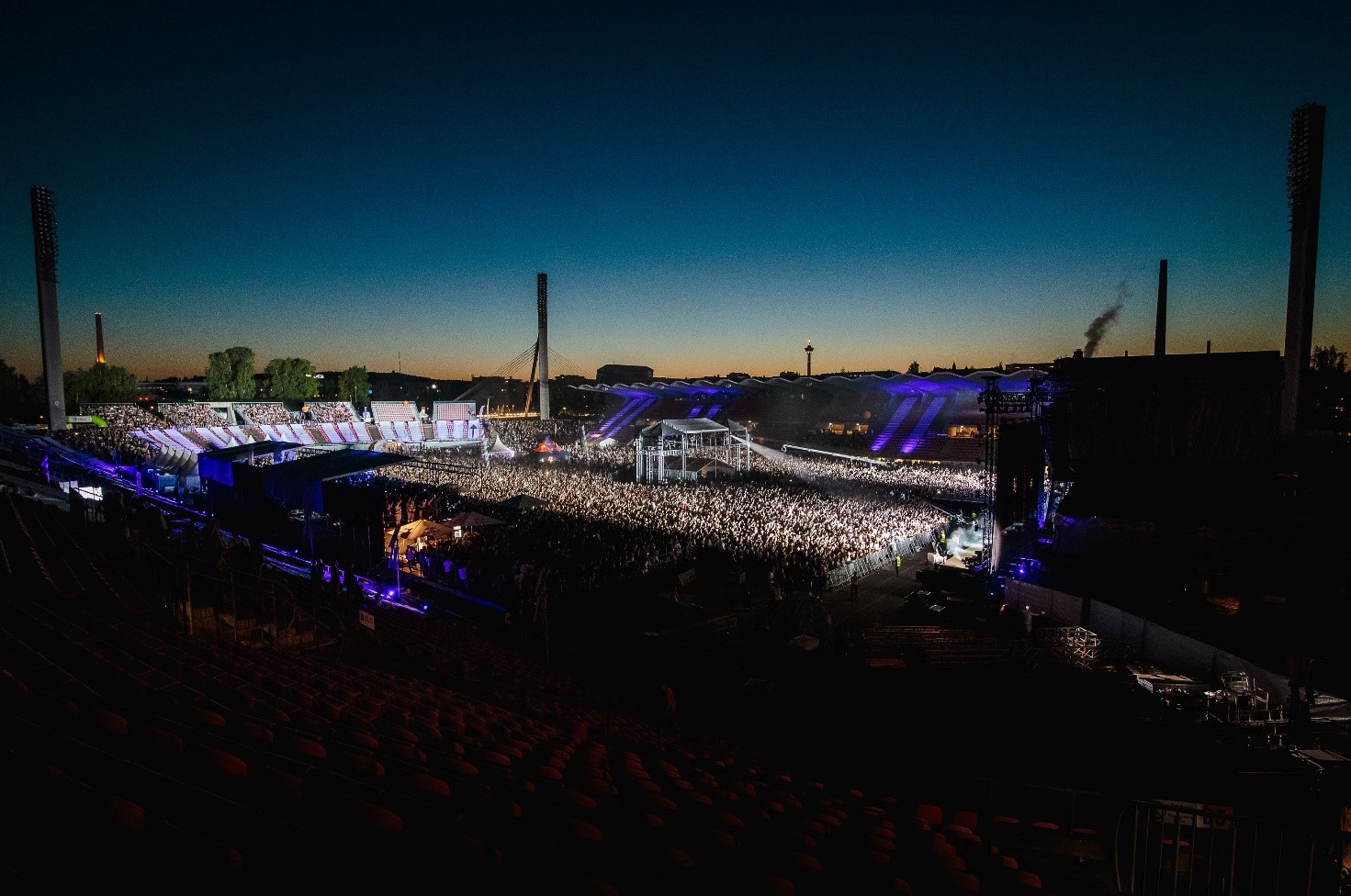
The SURE approach
The project has three dimensions to directly address the above crosscutting challenges:
-
A governance and change management dimension that aims to further the digitisation and coordination of stakeholders from the public, private and social spheres who are involved in events’ management.
-
A technological dimension that aims to create a new AI-based solution for risk mitigation, crisis-management and event management. The SURE product will be directed to visitors, event organisers and crisis management stakeholders alike.
-
A social dimension. The key challenge of SURE is how to efficiently manage large crowd-concentration and event-related urban security in a complex and evolving urban environment without over-securing sensitive urban areas which may cause the undermining of the citizens’ sense of security. In parallel SURE is touching upon the question of event-policy development and social spatial justice including the free use of public space and accessibility.
For its delivery the project aims
-
to improve the security and risk planning coordination systems between the key stakeholders typically involved in event management,
-
to develop a new artificial intelligence (AI) product for surveillance and risk management adapted to the European market
-
and to match it to a geolocation tool or application for the general public to be used for optimal experiences and safety in the course of an event.
The project has three dimensions to directly address the above crosscutting challenges:
-
A governance and change management dimension that aims to further the digitisation and coordination of stakeholders from the public, private and social spheres who are involved in events’ management.
-
A technological dimension that aims to create a new AI-based solution for risk mitigation, crisis-management and event management. The SURE product will be directed to visitors, event organisers and crisis management stakeholders alike.
-
A social dimension. The key challenge of SURE is how to efficiently manage large crowd-concentration and event-related urban security in a complex and evolving urban environment without over-securing sensitive urban areas which may cause the undermining of the citizens’ sense of security. In parallel SURE is touching upon the question of event-policy development and social spatial justice including the free use of public space and accessibility.
For its delivery the project aims
-
to improve the security and risk planning coordination systems between the key stakeholders typically involved in event management,
-
to develop a new artificial intelligence (AI) product for surveillance and risk management adapted to the European market
-
and to match it to a geolocation tool or application for the general public to be used for optimal experiences and safety in the course of an event.
SURE Solution Setup
First challenge: Improve the capacity of existing surveillance systems to ‘understand’ and interpret human behaviour in the public domain, in order to manage risk and threat occurrences. Currently cities are installing more and more cameras but still struggle to understand what is happening around the city. Public safety staff, monitor the city 24/7 and respond to events as they occur using IoT and video analytics as key real-time enablers. Therefore the existing AI systems are insufficient to ensure adequate monitoring and detect actual anomalies.
Tested Solution: In collaboration with the police department and the city of Tampere, Securitas, Insta Group and Nokia Networks and Solutions, all specialising in AI, are collaborating in order to develop a new AI product that will be able to understand and interpret public behaviour and alert if there is a perceived risk. The AI product will feed into a new user-friendly application comprised by the Insta Blue Tracker (IBT) and the Nokia Scene Analytics AI Solution.
|
Novelty: Such technology at the moment is only available in Asia and is adapted to very large crowds Thus, it is not operable in the European setting where the average city has significantly lower density in public spaces. Throughout 2020 the SURE partners have been working to address this issue via a combination of offline and online methods which will ultimately result to a new AI system adjusted to the European environment. |
Second Challenge: Improve capacity in addressing event related risks and improve event participant experience, reduce risk and maintain the feeling of safety and pleasantness without alarmism.
Methodology and tested solution: SURE builds on the interplay of safety and atmosphere at urban events by helping authorities and event producers plan, anticipate and test the various elements of events, as well as run smoothly during the event. To do so, the project team led by Tampere University (TAU) and Tampere University of Applied Sciences (TAMK) is expanding the traditional approaches to crisis management to include holistic urban policy considerations touching upon the question of city transformation as driven by evolving conceptions of safety, technological advancements and urban living overall.
Specialised workshops were organised over a period of 9 months in order to map the perceptions and actions of key stakeholders involved in urban risk management.
The workshops involved the police, the fire brigades, first-aid response and non-governmental organisations involved in street-work and first aid. In addition, service concepts, service design and co-design processes were communicated to potential event customers to support both event security and customer security experience.
|
Novelty: The silos between relevant agencies especially in the security domain are extremely strong and persistent. On the other hand, each of those stakeholders offers a different perspective on what is essential when approaching the question of urban security and in particular around the organisation of events. In parallel none of these stakeholders have had up to this point a common forum for collaboration and coordination. While tactically they have been operating alongside in the field any type of collaboration has been circumstantial on the ground instead of being by-design. The SURE planning blueprint and the SURE digital solution will mitigate this issue offering an easy to use yet highly intelligent way of coordination between critical stakeholders helping foresee and reduce the effects of crisis aiming to practically break the silos between relevant agencies. |
Third challenge: It does not come as a surprise to say that across the world events have the capacity to alter the face of a city. Unplanned, these interventions can lead to stagnating infrastructure. With the appropriate holistic approach, events can serve as drivers of social change and urban transformation. From the impact of traditional ‘grey’ infrastructure as the construction of a stadium or an arena to more atypical considerations such as networked (or dispersed) event management under a health crisis and crowd behavioural changes as manifested in the public domain events are a key driver of urban development and experience.
|
Questions of accessibility and social spatial justice will feed into the next steps of SURE informing the design of simulations and the data-collection design during the real-life large-scale events that are meant to take place in 2021. In parallel the SURE team is already building bridges with the social services and social actors of the city of Tampere to help transform the delivery of services to vulnerable populations showcasing that safety is directly linked to prevention. |
Overview of the UIA management innovation challenges for SURE, Tampere
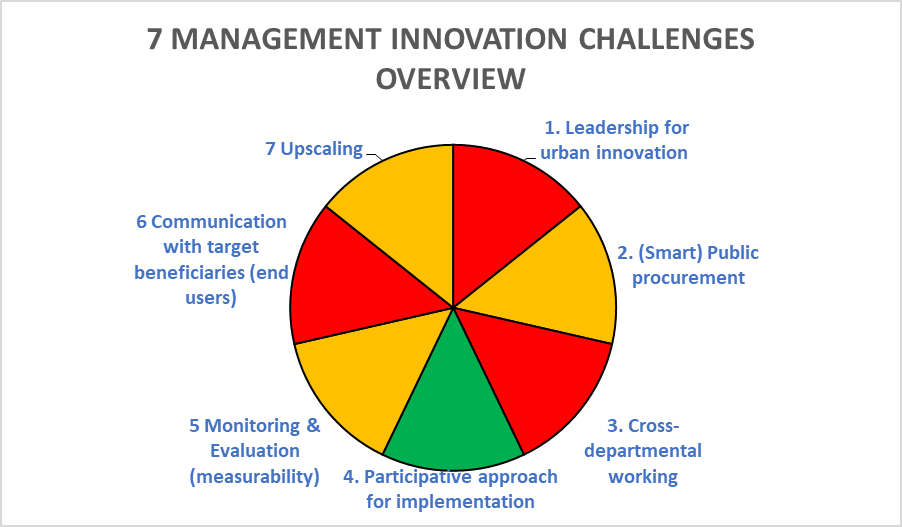
Planning, leadership and governance are integrated and necessary factors when it comes to developing any kind of security ecosystem (Lacinák, M. & Ristvej, J. (2017). For successful delivery SURE requires access and support from multiple sources of public and private authority including but not limited to the mayoral leadership, access to key public services, access to the police and other security-related industries and of course, access to data.
Stakeholder engagement workshops are providing feedback on the typical expected risk scenaria that a surveillance system should be able to recognise. A coordination committee is likely to emerge out of this process between the interested stakeholders. In parallel under SURE a new network of public surveillance cameras is being set-up in partnership with the city which in turn is creating a new central operations and integrated data management control-room. The final SURE tool will be usable not only during events but also during everyday life alerting citizens and authorities for potential disruptions but also providing useful information during events.
To this moment the city has procured new cameras and drones as a direct result of SURE in order to develop the new system for surveillance geared to risk management and data protection. Procurement itself has not been a challenge in this respect. However, what may prove to be challenging as the project advances is the development of new procurement guidelines for the purchase of SURE as a final output by other municipalities or stakeholders. Given that SURE has two components (the technical applications and the management blue book) successful application of SURE requires a set of pre-existing conditions including for example purchase of cameras, access to drones and sensoring systems as well the pre-existence of a type of situation and control room.
What is important to maintain: Procurement in the case of SURE is dependent on a set of accompanying deployment guidelines including pre-requisites for successful delivery. As such, procurement needs may vary depending on the level of maturity of the city, the interest in the deployment of SURE as well as the givern target users.
SURE aims to improve public safety through the lens of event-management all the while creating daily cross-cutting benefits for the management of public space and the reduction of hazards. As such, cross-departmental working is central to the success of SURE. Within the first year of the project implementation successful cross-departmental working was difficult owing both to the outbreak of the international health crisis and subsequent lockdown as well as to the vertical nature of public administration and the relative novelty of the issue of resilience and public security. To address this issue, the management team initially set-up a series of 'agenda-setting' meetings within the municipality to inform about the project, going hand-in-hand with the process of securing leadership for the project. Such a process, was considered essential both in order to secure appropriate access to the relevant city departments and to succeed in integrating SURE as a process (rather than as a project) within the broader city ecosystem.
Delivery Partners in SURE have a key role in the project's implementation and they share with the urban authorities risks and responsibilities. This is a simple yet critical management component present in SURE which in turn guarantees the timely delivery of the various project milestones. In SURE, separation of tasks between partners goes hand in hand with a strong central management team and a functioning steering committee.
What is important to maintain: Within the SURE project structure there are several moments foreseen to ensure independence of action on the one hand, coordination, problem-solving and approval on the other.
Monitoring and evaluation in such an innovation project will be liaised to the desired outcomes and not the outputs. At the same time, early consideration is important in order to render the monitoring and evaluation activities meaningful. Often in projects, we observe that monitoring and evaluation activities come near the end of a project cycle, an ominition which is leaving little to no room for improvement manoeuvres.
Distinguishing between progress indicators and impact indicators monitoring actvities of SURE are at this stage limited to the project milestones delivery based on the SURE project plan As the project advances impact success goals are being gradually set by the SURE team. Impact success indicators will lead to the formation of an evaluation baseline and allow for the monitoring of the project relative to its stated ambitions. In addition, impact sucess indicators will also be useful in the scaling-up process of the project as they allow for the more accurate description of the program process and outcomes.
SURE aims to create a collaboration net between the private actors such as the investment agents responsible for the construction of the new Tampere Arena, urban planning authorities responsible for undeveloped public spaces such as a portion of the Tampere event beach area as well as local and regional security stakeholders such as the national police. To do so, the project leads have established direct communication lines with representatives from each of these sectors who constitute vital partners for the success of the project while being the end users of the SURE product.
In 2020 we experienced the extreme condition of managing a global pandemic. These extenuating circumstances were not necessarily favourable to communication and stakeholder collaboration or especially during the initial months equally delaying the simulation exercises. Simulation exercises are key to the SURE development as they will allow for real-life cooperation with the target beneficiaries in Tampere.
What is important to maintain: When thinking about alignment of key stakeholders the biggest challenge is to succeed in creating a ‘common language’ between otherwise very divergent sectors such as the police, private event organisers and the social services department of a municipality.
A positive problem-solving approach in this question is to adopt the logic of vertical and horizontal actions. While each of these stakeholders have their own ‘vertical’ and non-competing responsibilities, there are key horizontal areas of cooperation that once identified will improve efficiency of the vertical duties of each stakeholder.
Planning and preparation for upscaling started already in the first year of the project delivery. Early considerations for scaling up are critical for the success of any project in securing continuity. For Tampere the planning goals are:
- Building an exportable product
- Secure international collaborations and comparative learning for urban security
- Built a community of practice based on the collaboration between the three UIA cities working on Urban Security
- Create and test a beta version of SURE
- Be ready to present SURE in the next World Expo.
Within this context one of the key considerations is how to ensure that the City of Tampere who owns the rights to SURE outputs will create the appropriate structure to facilitate the circulation of SURE.
National and International stakeholder engagement is in fact an additional part of the SURE project delivery planning. It forms part of the project scaling-up agenda. The selected group of participants at that level will act as an advisory test-group who will provide feedback for the SURE Beta version and possibly organise a pilot use of the SURE outputs.
Relevance to EU policies
| “Even though the governance of security issues varies from one Member State to another depending on the levels of decentralisation, local and regional elected representatives consider that increased cooperation to coproduce security (notably concerning the sharing of information) between the sovereign power of the state and local and regional authorities is more than necessary, in particular because it would make it more effective in preventing risks and threats, but also in providing concrete holistic, cross-sectorial, innovative solutions co-designed and co-implemented with its citizens.”(Final Action Plan Security in Public Spaces, p. 4, Nov2020 https://ec.europa.eu/futurium/en/system/files/ged/final_action_plan_security_in_public_spaces.pdf) |
Urban security is an issue on top of the EU policy agenda featuring in the newly adopted (July 2020) EU Security Union Strategy to protect everyone in the EU and promote the European way of life as well as in the central European Commission priority for the European Digital Strategy .
SURE cuts across the points of intersection between the two strategies through its focus on advanced security in public spaces, AI technology innovations for risk mitigation & crisis management as well as its focus on increased cooperation between key stakeholders to coproduce security.
More specifically, the EU Security Union strategy covers the period from 2020 to 2025 and focuses on four priority areas.
-
A future-proof security environment;
-
Tackling evolving threats;
-
Protecting Europeans from terrorism and organised crime and
-
A strong European security ecosystem.
Similarly, the European Digital Strategy has four pillars. Technology that works for the people; a fair and competitive digital economy; an open, democratic and sustainable digital society; and Europe as a global digital player. Artificial Intelligence (AI) considerations cut across the four areas with a focus on ‘Excellence and Trust in Artificial Intelligence: Shaping Europe’s Digital Future’, expressed in the Report on the safety and liability implications of Artificial Intelligence, the Internet of Things and robotics.
Notwithstanding, large crowd concentration renders cities more vulnerable to natural and manmade risks, threats and hazards. The question of urban security itself is a highly contested and of course it has several dimensions, three of which, relevant to SURE are the protection of public spaces, the link between security and health as well as future-proofing for risk mitigation and enhanced feeling of security. The EU Action Plan for the protection of Public Spaces, was adopted in 2017 and based on the priorities set in the EU Urban Agenda, led early in 2019 to the establishment of the Partnership on Security in Public Spaces, coordinated by the City of Nice, the City of Madrid, and the European Forum for Urban Security (Efus). The Action Plan for Security in Public Spaces was published in November 2020 and proposed six key actions to be followed through at EU level.
The Actions are:
-
Developing a Framework for a Self-Assessment tool dedicated to Urban Authorities
-
Recommendations on EU security strategy, multi-level, participatory and innovative governance and funding
-
Evaluate the application of AI inclusive technologies
-
Develop a capacity building training scheme about integrated sustainable urban security
-
Measure the impact of social cohesion and inclusion on security in public spaces of urban and peri-urban areas
-
Develop guidance for architectural spatial design and planning (security by design)
SURE, already active since January 2020, translates in action at the local level at least three of these priorities through the application and advancement of AI technologies in an expansive and inclusive way.
Concluding remarks and innovations summary. How is SURE moving the needle in the urban security quest
Tampere is a typical EU mid-sized post-industrial city which places a strong emphasis for growth on a city-brand identity based on tourism, innovation and nature. Rendering Tampere a safe events destination is part of the city’s larger urban strategy Tampere City Strategy 2030 offering a unique combinatory focus on the future of jobs, technological development and the urban safety ecosystem.
The City of Tampere is thus paving the way with a number of strategic programs that are expected to transform the experience of citizens and visitors alike in their everyday operations and use of services localising european urban resilience and recovery goals to 21st century city standards.
The UIA project SURE, is a cornerstone of these interventions embedded within the Tampere City Strategy 2030. Having completed its first year of implementation, it is already giving some key innovations both as a technical innovations and change-management project.
Change - management innovations (ongoing) Technical innovations (ongoing)
|
|
|
|
|
|
Ultimately, the new SURE tool that will be constructed will change services provision, risk mitigation and crisis management as well as improve holistically the events’ experience for users’ and involved stakeholder alike. Globally, the SURE tool, with an adaptable interface, is naturally exportable to all public and private users related to the events industry.
Locally the SURE blueprint for coordination and operations efficiency can serve as a change-management guide that adapted each time to local circumstances can help raise capacity in other cities across Europe in the domain of urban security and digitisation. SURE is proposing a new model of operations for the governance of the security ecosystem with spill-over effects beyond the events industry and traditional security concerns. Its every day applicability and focus in change-management allows a city to address more effectively social urban risk considerations and long-term stresses related to public space safety and liveability.
About this resource
The Urban Innovative Actions (UIA) is a European Union initiative that provided funding to urban areas across Europe to test new and unproven solutions to urban challenges. The initiative had a total ERDF budget of €372 million for 2014-2020.
Similar content
